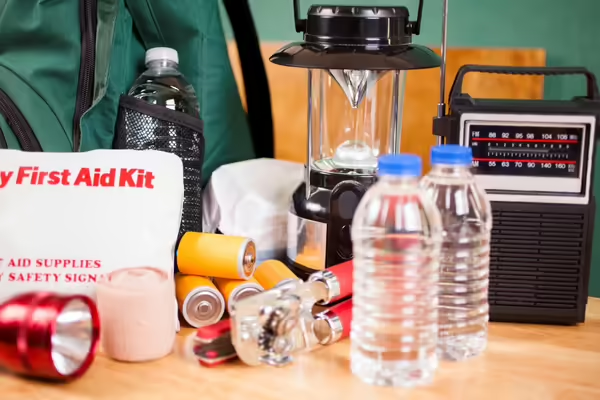
URBANA, Ill. – Fueled in part by the public’s recent interest in the coronavirus (COVID-19), disaster preparedness is a topic that is top-of-mind for many people these days. As communities grapple with questions about how to prepare for and respond to a public health crisis, many leaders and decisionmakers are leaning on previously established severe weather preparedness efforts. And some communities are confronting the reality that they are under-prepared for events like these.
One person providing leadership to this effort in Illinois is University of Illinois Extension Educator Carrie McKillip, an expert in community and economic development. McKillip’s focus lies in helping communities design tailored plans to mitigate and recover from disasters.
“Disaster preparedness is a topic that every community in Illinois should be talking about,” says McKillip. “Whether it’s a public health crisis or dealing with the aftermath of a tornado, every community should have plans that guide how they communicate with residents and businesses, how they encourage adoption of preventative protection measures, and how they provide access to post-event recovery resources.”
One strategy that has proven successful for disaster preparedness professionals in recent years is to focus their educational efforts on youth preparedness. While still an emerging practice, some of the early successes suggest that youth-oriented intervention strategies can be particularly effective as part of a long-term preparedness effort. Kids are believed to be more openminded and receptive to new information, which makes them a great asset to a public education campaign.
By inviting youth into the conversation, communities simultaneously develop short-term benefits with long-term reach. Some research studies have suggested this approach creates positive impacts for both family and community resilience measures, but there is also some evidence that it has positive benefits for how children and youth emotionally cope with these situations.
One ally in this effort is the Federal Emergency Management Agency (FEMA). Illinois Extension recently met with FEMA Region V Community Preparedness Officer Kim Hayward to talk about strategies for addressing the needs of Illinois communities. With the mission of helping people before, during, and after a disaster, FEMA has a broad portfolio of educational products and community outreach campaigns to help drive preparedness efforts.
“We place a huge focus on youth because of what we call the ‘triple benefit,’” says Hayward. “If we can reach them when they are young, there are three moments in time where we see it pay a benefit: They make smarter choices about safety for themselves and their communities in the present; they bring the information home and educate their parents and other family members; and then they grow into prepared adults who take these skills with them into other communities. The multiplier effect pays a dividend that is incredibly impactful to our programming.”
There is mounting evidence that other organizations have found similar success with this strategy. New York City Emergency Management partnered with Marvel to introduce Ready Girl, a comic-book style superhero that teaches the kids of New York City how to prepare for emergencies. The Red Cross also launched Monster Guard, a highly-rated app that helps kids prepare for emergencies they may experience at home or school. Both resources have been well received by kids and parents.
“There are many of us who are trying to increase our reach among youth, especially teenagers, because we know it has such a great long-term benefit on health and safety during an emergency,” says Hayward. “We use simple language to discuss protective actions that kids can easily understand and remember.”
While youth is one priority audience for disaster preparedness efforts, both Illinois Extension and FEMA have programming that targets other populations, as well. When it comes to disasters, the burden of recovery isn’t always equally distributed, making it especially important to provide support and educational resources to the business community, municipal leaders, and vulnerable populations like the elderly and the socioeconomically disadvantaged.
If you or your family are interested in learning more about disaster preparedness, consider these resources.
- My Preparedness Initiative (MyPI)
- Teen CERT
- Youth Preparedness Council
- Student tools for Emergency Planning (classroom curriculum for 4th-5th grades)
- Ready 2 Help (a card game for youth age 8-12)
- Prepare with Pedro (activity book for young children)
Illinois Extension leads public outreach for University of Illinois by translating research into action plans that allow Illinois families, businesses, and community leaders to solve problems, make informed decisions, and adapt to changes and opportunities.